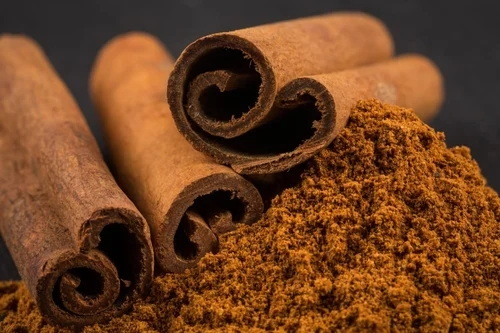Content Menu
● Introduction to Cinnamon Bark Extract
>> Production Methods
● Comparison with Other Herbal Extracts
>> Traditional Extraction Methods
>> Modern Extraction Technologies
● Efficiency Comparison
>> Advantages of Modern Technologies
● Challenges and Future Directions
>> Biotechnological Strategies
>> Sustainability Considerations
>> Market Demand and Economic Impact
● Applications of Cinnamon Bark Extract
>> Pharmaceutical Applications
>> Food Industry Applications
>> Cosmetic Industry Applications
● Regulatory Frameworks
>> Quality Control Measures
>> Future Developments in Extraction Technology
>> Supercritical Fluid Extraction
>> Pressurized Liquid Extraction
● Conclusion
● Frequently Asked Questions
>> 1. What are the main bioactive compounds in cinnamon bark extract?
>> 2. How does ultrasonic extraction enhance the efficiency of cinnamon bark extract production?
>> 3. What are the advantages of microwave-assisted extraction over traditional methods?
>> 4. Can biotechnological strategies enhance the production of herbal extracts?
>> 5. What are the challenges in scaling up the production of cinnamon bark extract using modern technologies?
● Citations:
Cinnamon bark extract is a valuable component in both traditional medicine and modern pharmaceuticals, known for its rich bioactive compounds such as cinnamaldehyde and cinnamic acid. The efficiency of its production compared to other herbal extracts is a topic of interest, especially considering advancements in extraction technologies. This article explores the methods and technologies used in the production of cinnamon bark extract and compares them with those used for other herbal extracts.

Introduction to Cinnamon Bark Extract
Cinnamon bark extract is derived from the bark of the cinnamon tree (Cinnamomum verum or Cinnamomum cassia), which is native to Sri Lanka and Southeast Asia. It has been used for centuries in traditional medicine for its anti-inflammatory, antimicrobial, and antioxidant properties. The extract is rich in bioactive compounds, including cinnamaldehyde, cinnamic acid, and flavonoids, which contribute to its therapeutic effects.
Production Methods
The production of cinnamon bark extract involves several steps, including drying, grinding, degreasing, extraction, and purification. Here's an overview of the process:
1. Drying and Grinding: Cinnamon bark is dried to remove moisture and then ground into a fine powder.
2. Degreasing: The powder is treated with solvents like ether to remove fats and oils, resulting in degreased cinnamon bark powder.
3. Extraction: The degreased powder is mixed with ethanol-water solutions and subjected to ultrasonic extraction. This method enhances the efficiency of extraction by breaking down cell walls and releasing bioactive compounds.
4. Purification: The crude extract is purified using macroreticular resin gel columns, with ethanol-water solutions used as eluents.
Comparison with Other Herbal Extracts
Traditional Extraction Methods
Traditional methods for herbal extracts often involve decoction or infusion, where herbs are boiled or steeped in water or ethanol. These methods can be time-consuming and may not yield high concentrations of bioactive compounds.
- Decoction: Herbs are boiled in water to release their active ingredients.
- Infusion: Herbs are steeped in hot water or ethanol to extract their components.
Modern Extraction Technologies
Modern extraction technologies include microwave-assisted extraction (MAE) and ultrasound-assisted extraction (UAE). These methods offer advantages over traditional techniques by reducing extraction time, increasing yield, and preserving thermosensitive compounds.
- Microwave-Assisted Extraction (MAE): Uses microwave energy to heat the solvent and plant material, enhancing diffusion and extraction efficiency.
- Ultrasound-Assisted Extraction (UAE): Employs ultrasonic waves to disrupt plant cell walls, facilitating the release of bioactive compounds.
Efficiency Comparison
Cinnamon bark extract can be more efficiently produced than some other herbal extracts due to its adaptability to modern extraction technologies like UAE and MAE. These methods allow for shorter extraction times and higher yields compared to traditional methods.
Advantages of Modern Technologies
1. Time Efficiency: Modern extraction methods significantly reduce the time required for extraction, making them more efficient for large-scale production.
2. Higher Yield: Techniques like UAE and MAE can extract more bioactive compounds from the plant material, resulting in higher yields.
3. Preservation of Thermosensitive Compounds: These methods can preserve heat-sensitive compounds, ensuring that the extract retains its full therapeutic potential.

Challenges and Future Directions
Despite the advantages of modern extraction technologies, challenges remain, such as the cost of equipment and the need for skilled personnel. Future research should focus on optimizing extraction conditions and scaling up production while maintaining cost-effectiveness.
Biotechnological Strategies
Biotechnological approaches, including metabolic engineering and synthetic biology, can enhance the biosynthesis of active ingredients in herbal extracts. These strategies offer potential solutions to overcome natural limitations in plant-based production systems.
Sustainability Considerations
Sustainability is a crucial factor in the production of herbal extracts. Modern technologies can help reduce waste and energy consumption, making the production process more environmentally friendly. For instance, using renewable energy sources for powering extraction equipment can significantly reduce carbon footprints.
Market Demand and Economic Impact
The demand for herbal extracts, including cinnamon bark extract, is increasing globally due to their perceived health benefits and natural origin. This trend presents opportunities for economic growth in regions where these herbs are cultivated. However, ensuring consistent quality and meeting regulatory standards are essential for maintaining market competitiveness.
Applications of Cinnamon Bark Extract
Cinnamon bark extract has a wide range of applications in the pharmaceutical, food, and cosmetic industries. Its antimicrobial properties make it useful in the development of natural preservatives for food products. In the pharmaceutical sector, it is used for its anti-inflammatory and antioxidant effects. Additionally, its fragrance and flavor are utilized in the cosmetic industry for skincare products and perfumes.
Pharmaceutical Applications
- Anti-inflammatory Effects: Cinnamon bark extract is used in formulations to reduce inflammation and improve symptoms in conditions like arthritis.
- Antioxidant Properties: It helps protect against oxidative stress, which can contribute to chronic diseases.
Food Industry Applications
- Natural Preservatives: The antimicrobial properties of cinnamon bark extract make it a potential natural preservative for extending the shelf life of food products.
- Flavor Enhancer: It is used as a flavoring agent in baked goods and beverages.
Cosmetic Industry Applications
- Skincare Products: Cinnamon bark extract is incorporated into skincare products for its antioxidant and anti-inflammatory effects, which can help improve skin health.
- Fragrances: Its distinct aroma is used in perfumes and fragrances.

Regulatory Frameworks
The production and use of herbal extracts, including cinnamon bark extract, are regulated by various national and international bodies. These regulations ensure that extracts meet quality standards and are safe for consumption. Compliance with these regulations is crucial for manufacturers to maintain market access.
Quality Control Measures
Quality control measures include testing for purity, potency, and contaminants. Manufacturers must adhere to Good Manufacturing Practices (GMP) to ensure consistency and safety in their products.
Future Developments in Extraction Technology
Future developments in extraction technology are expected to focus on sustainability and efficiency. Innovations such as supercritical fluid extraction and pressurized liquid extraction offer promising alternatives with reduced environmental impact.
Supercritical Fluid Extraction
This method uses supercritical fluids, typically carbon dioxide, to extract bioactive compounds. It is solvent-free and can preserve thermosensitive compounds.
Pressurized Liquid Extraction
This technique involves using high pressure to enhance the extraction efficiency of solvents. It reduces solvent consumption and extraction time.
Conclusion
Cinnamon bark extract can indeed be more efficiently produced than some other herbal extracts, thanks to its compatibility with advanced extraction technologies like ultrasonic and microwave-assisted extraction. These methods not only reduce production time but also increase the yield of bioactive compounds, making them ideal for large-scale industrial applications. However, further research is needed to optimize these processes and make them more cost-effective.

Frequently Asked Questions
1. What are the main bioactive compounds in cinnamon bark extract?
Cinnamon bark extract is rich in bioactive compounds such as cinnamaldehyde, cinnamic acid, and flavonoids, which contribute to its therapeutic properties.
2. How does ultrasonic extraction enhance the efficiency of cinnamon bark extract production?
Ultrasonic extraction uses ultrasonic waves to disrupt plant cell walls, facilitating the release of bioactive compounds and increasing extraction efficiency.
3. What are the advantages of microwave-assisted extraction over traditional methods?
Microwave-assisted extraction offers advantages such as uniform heating, reduced solvent loss, and higher yields compared to traditional methods.
4. Can biotechnological strategies enhance the production of herbal extracts?
Yes, biotechnological strategies like metabolic engineering and synthetic biology can enhance the biosynthesis of active ingredients in herbal extracts, overcoming natural limitations.
5. What are the challenges in scaling up the production of cinnamon bark extract using modern technologies?
Challenges include the cost of equipment, the need for skilled personnel, and maintaining cost-effectiveness while scaling up production.
Citations:
[1] https://patents.google.com/patent/CN107496269A/en
[2] https://www.jstage.jst.go.jp/article/jspharm/77/2/77_83/_article/-char/en
[3] https://pmc.ncbi.nlm.nih.gov/articles/PMC10494279/
[4] https://www.sciencedirect.com/science/article/abs/pii/S1359511322000289
[5] https://www.frontiersin.org/journals/chemistry/articles/10.3389/fchem.2025.1536590/full
[6] https://pmc.ncbi.nlm.nih.gov/articles/PMC11823656/
[7] https://www.tandfonline.com/doi/full/10.1080/23311932.2023.2284686
[8] https://www.kerry.com/insights/kerrydigest/2021/botanical-extraction-methods
[9] https://www.sohu.com/a/846632226_121124322
[10] https://dergipark.org.tr/tr/download/article-file/3168440































